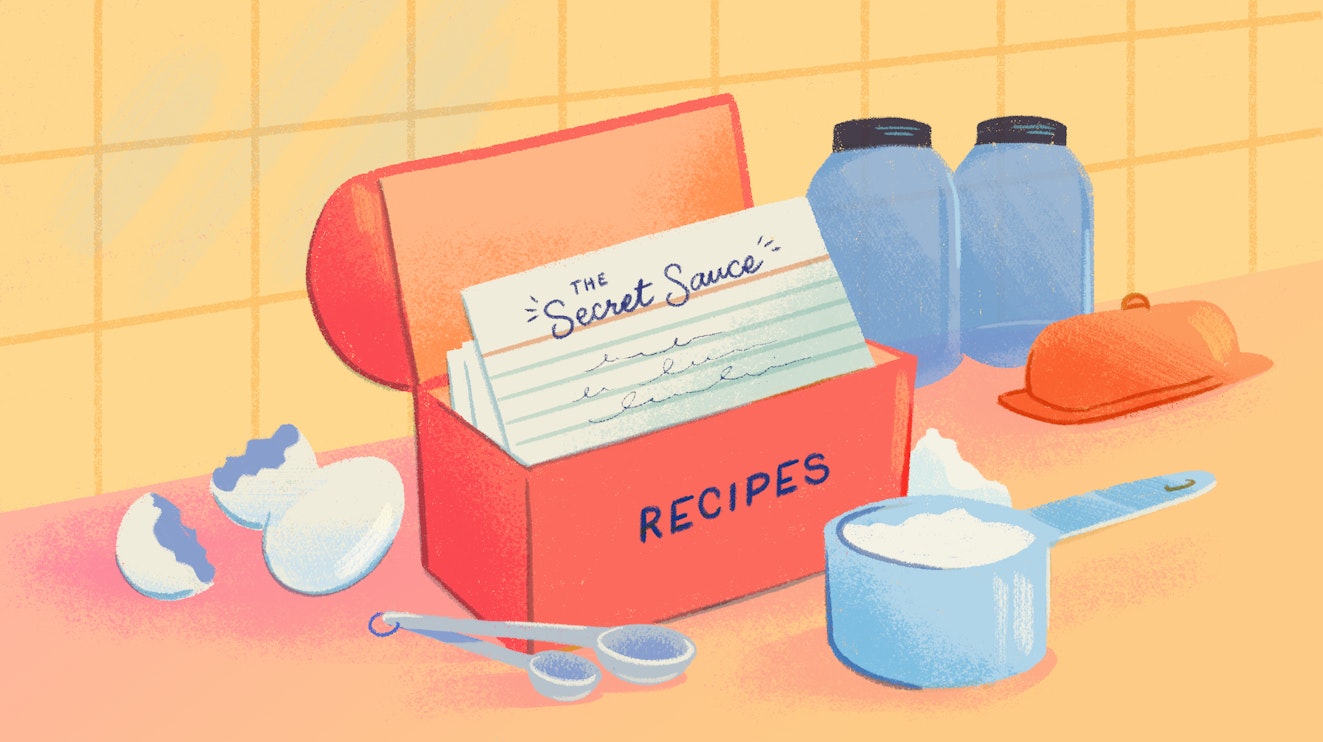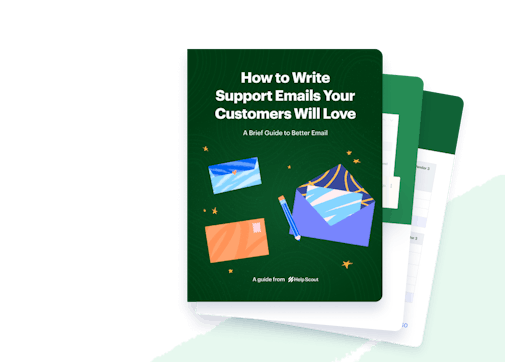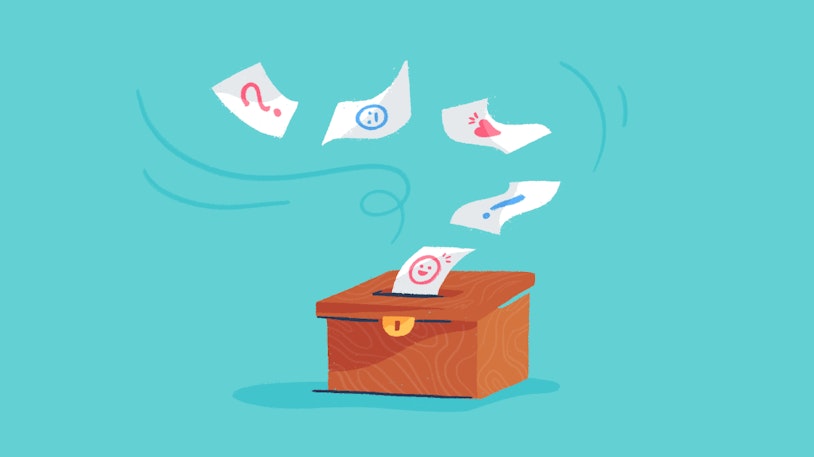Building a strong customer success strategy is a key component of creating a holistically good customer experience. After all, how can people enjoy your product if they don't know how to be successful with it?
A strong customer success strategy gives your customers the tools they need to use your product correctly, and it also:
Lowers churn rates.
Drives loyalty and retention in your customer base.
Boosts word of mouth marketing from your happy customers.
Makes renewals and upselling much easier.
In this post, we'll break down the nine critical components of an effective customer success strategy and show you how you can implement them for your own business.
1. Understand your customers
How much do you already know about your customers? Do you know your customers' demographics, why they are using your product, and what they are looking to get out of it?
Before embarking on building any customer success strategy, it's essential to know who you are trying to serve. The same approach will not work for all of your customers, and it's doubtful that they want you to treat them all the same way.
For instance, a large enterprise customer will likely want and expect a more personalized touch than a user in your trial experience would.
Here are a few ways to get the ball rolling on knowing your customers:
Evaluate data around your customers and create customer segments.
Work with your sales and marketing teams to understand who they are trying to attract and why.
Acknowledge your company's motivations around attracting specific types of customers, and determine how your customer-facing teams can help drive those purchases.
Create segments of your customers. Having a few specific demographics you are working to understand and address makes your work at hand much easier to define.
2. Develop processes
After you've defined more specific groups that you are trying to attract and understand, you can start to create internal processes to make sure that's happening. Not all customers, for instance, should have a customer success manager (CSM).
Look at your segments and start to brainstorm on what each of them needs to be successful. For instance, some of your customers may be working with sales before becoming a customer, while some may go through a low-touch purchase process. Some other things to consider are:
What does conversation escalation look like? Does it happen faster for some customers than others?
What do the pricing tiers for your customers have to do with the level of service that you provide? Are you comfortable giving everyone the same service?
Which deals are your sales team involved in, and what does the handover look like when they transition to support or success?
Do you offer customer success to everyone?
Which support or success channels are available with which of your plans?
Creating more defined processes as part of your customer success strategy sets up both your internal and external teams for victory.
3. Get a CRM
If you don't already have a way to understand a customer's individual experience with your company, it's time to get one. A customer relationship management (CRM) tool helps keep everything organized and ensures that you have a full overview of how your customers are being reached out to and when.
Beyond that, CRMs help your sales team understand how many contacts they've already engaged and how the responsiveness to their outreach is going, and it lets your support team get an overall context of how the customer is doing more holistically.
Some great CRMs to consider if you aren't already using one are:
4. Proactively educate
One of the best things you can do to cultivate success in your customers is to incorporate proactive support into your customer success strategy. Proactive support is anything that allows your customers to get information about their problems before they need to reach out to your support or customer success team.
Some examples of this are:
Documentation.
Webinars.
Quizzes or interactive guides to help individuals select the right product for themselves.
Case studies and social proof.
Best practices guides.
In-app onboarding experiences.
Triggered email campaigns.
Support autoresponders.
Educating your customers allows them to get the most out of your product and creates a sense of loyalty.
Most people are happiest if they never have to reach out to support. Before reaching out for help, 81% of all customers try to find the answers to their inquiries themselves. If you can educate them before they even need to start looking for answers, imagine how empowered they would feel?
You Need a Budget does a great job of proactively educating its customers, with two whole separate tabs in their main navigation for education and inspiration.
Make it easy for people to get their answers, yes, but educate them before they need answers, and you've got a winning customer success strategy.
5. Use automation
The more you can free up the humans on your team to do impactful human work, the stronger your customer success strategy will be. Use automation wherever you can to take menial work out of the day-to-day of your team.
Leverage your data and processes from the first few steps of this post to create scaling communications. Trigger emails off usage patterns, behaviors in the product, or even place in the customer lifecycle.
Automation takes the guesswork out from your CSMs and sales team and gives the right communication to the right people at the right time.
6. Find your value realization moment
When is your customer’s "Ah ha!" moment about why they are using your product and how valuable it is? There are likely a few of them that lead up to eventual customer success. If you don't already have them documented, you should. They are integral to the ongoing productivity of your customer success strategy.
Everything in your customer success strategy should be driving individuals to these moments of value realization. These moments could be anything from someone becoming a customer to creating a website — or even taking action within a specific segment of your product for the first time.
Create content and processes within your customer success strategy that drive your customers to these moments as quickly and readily as possible.
7. Listen to what your customers say
Which parts of your customer experience do people love, and which do they hate? Chances are you are already aggregating the feedback that you need to know this.
Look at the input points and correlate the data with where you aggregated them in the customer journey and which types of customers are leaving them. Segmenting your data in this way helps to pinpoint where your customer effort and customer satisfaction scores are along the customer journey and which parts of it affect your customers the most.
For instance, if your customer effort score is low (on average) at the start of a customer's journey and spikes after the two-month mark, you can identify unique opportunities within that time to make things better. Be targeted with your improvements rather than scattershot.
When asking for feedback, remember to:
Make it easy for customers to reach out. They shouldn't have to wait for you to ask them. Create feedback forms and email addresses, and make it so customers can reach out no matter where they are.
Respond personally to anything a customer sends to you. Whether that’s sending a "thanks" or asking for more information, always respond to customer feedback and acknowledge it.
Try to automate feedback aggregation if you can. Send a quarterly CSAT or NPS survey automatically.
Ask about how your customers use the product. Ask where they experience pain and what they love most instead of asking about their specific feature requests.
Along with the traditional places where you ask for and offer the availability to leave feedback, remember to ask when customers stop using your product, too. Exit feedback can help you understand what you can do to prevent churn and improve customer experience.
Organize the data regularly and correlate the amount of revenue that you lose for each churn reason. Share the information about primary churn reasons, and prioritize them by the amount of revenue lost to each reason.
This information is useful for both your customer success strategy and for your company strategy as well. Everyone cares about losing money.
8. Be human
As much as automation, AI, and other technologies can make your team's lives easier, try to keep your customer success strategy human. Your customers don't want to speak to support robots when they reach out.
Part of that is hiring the right people for the job. When looking for individuals to work on your customer support and customer success teams, interview and hire for qualities like empathy, resiliency, adaptability, and patience.
People who exhibit all of these traits will have no problem laying the groundwork for your customer success strategy and interacting with all of your customers in a human, meaningful way.
While it's good to focus on hard metrics like response times and customer satisfaction, much of that will come by hiring individuals who genuinely care about your customers.
Even when writing your saved replies or automated onboarding, try to use language that feels like a human wrote it instead of a business.
9. Measure and iterate
As you work to build your customer success strategy, you must always keep these two questions in your mind: How are your customers doing, and how are you doing?
If you aren't considering these questions regularly and measuring metrics that funnel up to them, you don't know if anything you are doing actually creates impact. How are you supposed to determine if your customer success strategy is working correctly if you don't also measure it?
Here are some metrics to consider:
Customer satisfaction
Customer Effort Score (CES)
Net Promoter Score (NPS)
Product Adoption Score
Churn
Retention
Expansion
Trial-to-customer conversion rate
Track how these are trending over time as you implement new functionality within your customer success strategy.
You can also use these metrics to understand how the processes you currently have in place affect your customers. For instance, even if you haven't made any specific changes to your product launch process, watch if these metrics move after releasing a new piece of your product. If your NPS goes down or your CES goes up, it may mean that your launch process needs some extra attention.
Customer success is in the strategy
When it comes to customer success strategy, the critical ingredient is customer focus.
Spend time getting to know your customers and their motivations and developing processes that support them in the way they want you to help them. Take time to find CRM software that works for what you need and makes it easy to share customer context amongst all of your teams.
Proactively educate your customers. Guide them with content like webinars, videos, documentation, and in-app onboarding. Use these tools to guide them toward your point of value realization — the moment where your product and service's value is evident and most exciting for them.
You can use automation to get there, but remember that keeping it human will be best for your customer success strategy. When you have conversations with your customers or they leave you feedback on how you're doing, take the time to listen and implement changes based on what they've said.
Lastly, always be iterating. Nothing should stay the same, especially not your customer success strategy. Your customers are ever-changing, and you should change with them.














